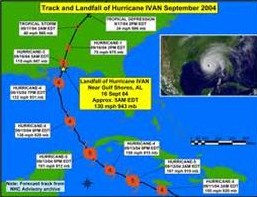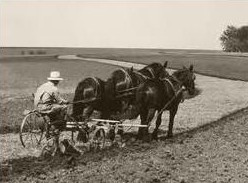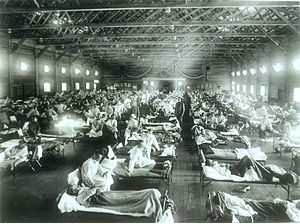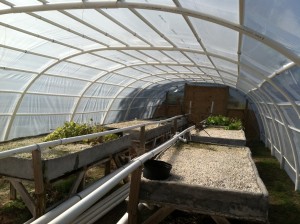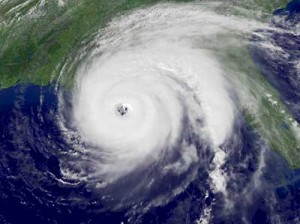 I live in Northwest Florida so every year from June 1 through November 30 my ears perk up to listen for reports of hurricanes that might be entering the Gulf of Mexico. With each hurricane that heads for Pensacola I must make a strategic decision; stay or go. To date, after 19 years, I can say that I have chosen to stay. Even when Hurricane Ivan wiped our coast off the map and caused many if not most of us to live without power and the niceties of civilized life for a couple of weeks, I was here. It WAS an experience!
I live in Northwest Florida so every year from June 1 through November 30 my ears perk up to listen for reports of hurricanes that might be entering the Gulf of Mexico. With each hurricane that heads for Pensacola I must make a strategic decision; stay or go. To date, after 19 years, I can say that I have chosen to stay. Even when Hurricane Ivan wiped our coast off the map and caused many if not most of us to live without power and the niceties of civilized life for a couple of weeks, I was here. It WAS an experience!
This is why I yearly assess my resources and gear so that I am prepared regardless of if decide to leave, or stay. My assessment is fairly simple but attempts to cover the basics. Food, water, and essential equipment & supplies, and repair materials.
First, I take stock of my pantry. This is the third level of my storage strategy and includes the foods my family and I eat every day. Things like dehydrated entree’s “<place selected protien here> Helper”, as well as canned fruits and vegetables, condensed milk, canned meats, etc. I include two other levels of food storage in my overall preparedness strategy; Level 2 is dehydrated and freeze dried fruits and vegetables, and Level 1 is what I call, “The Morman Basics” but I will cover that in another article.
I try to keep a well stocked pantry capable of providing food for four people for three months, however I frequently find that I have slacked off in this area from two sides.
The first side is that I have the food physically stocked on the shelf, and though I try to pick up a few things when I’m out shopping, especially when 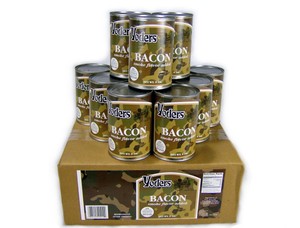 they’re on sale, to keep my pantry food levels up, sometimes I don’t keep up with the desired amounts. With three young men living in the house it is easy to find myself without… whatever. But the second side is equally important and that is to ensure that what is in the pantry is well within date. Having out-of-date foods usually comes from not rotating the cans, boxes and jars; eating older ones and buying newer ones to replace them.
they’re on sale, to keep my pantry food levels up, sometimes I don’t keep up with the desired amounts. With three young men living in the house it is easy to find myself without… whatever. But the second side is equally important and that is to ensure that what is in the pantry is well within date. Having out-of-date foods usually comes from not rotating the cans, boxes and jars; eating older ones and buying newer ones to replace them.
In most foods like vegetables and soups a few months, even a year past the due date is not a problem. Most canned foods are good for at least 24 months but do not actually “go bad.” They may loose some nutritional value, flavor or textural quality, but they are still safe to eat as long as the can has remained intact. Physically rotate milk since the milk solids will settle on the bottom of the can and make a goo. One exception that I would not play with is baby formula.
Remember that in most hardships where you will be clearing brush, raking, repairing, lifting and walking you will be burning more calories than prior to the event so make sure that the foods you have are both nutritious AND filling. An average male adult in their low 20s to low 40s who will be engaged in a moderate level of exercise needs around 2500 callories per day to maintain their body weight. An adult woman in the same category needs aroun 2300 so plan for the correct amount of calories. Do not under-supply. The stress level at home will already be higher than normal. My advise is that if you would like to lose weight it would be better to start a diet AFTER the lights come back on. You don’t have to eat the calories but at least you will have them if you need them.
Another issue is water. Remember that all the freeze dried and dehydrated food in the world is useless unless you can rehydrate it. I know, I know, you can eat it dry but seriously… generally speaking you can’t cook without water so store it!
Yes, hours before the hurricane you can fill up tubs and sinks with fresh water- and should! If nothing else you can use it to flush toilets, however these are EMERGENCY measures, and it is what those who haven’t prepared will be doing. What YOU should be doing is filling the bottles and barrels that you have been cleaning and saving for just such an occasion.
Two liter soft drink bottles or large plastic juice bottles work the best. Milk jugs, not so good but they are OK in a pinch. The biggest thing is to ensure that they are clean. Rinse them out to ensure that they are clean, fill them, then add about 5 drops of chlorine bleach- 15% sodium hydroxide -into each to a liter bottle, or 6 drops per gallon. Place these in a cool dark area away from activity so that they don’t get kicked and punctured.
You could also use large barrels as long as they are food grade and have had nothing toxic stored in them that could bleed back into the water once they are filled. Clean, then fill and add 1 tablespoon of chlorine bleach. How I came up with that is that “I” use 6 drops of bleach per gallon of clean water. Remember this is a short term thing, maybe 1 to 3 weeks, so no need to go overboard on the purity thing, especially if the water came from your tap to begin with. So 1 tblsp = 3 tsp = 360 drops. 360 drops divided by 6 drops/gal = 60 gal which is obviously more than 55 gallons but I suspect 30 more drops isn’t going to kill anyone. (I got these equivelencies off the Internet so I know they’re correct!) Some people will even tell you that it should be seven drops so I don’t think that there is a problem. Regardless, seal the drums so that nothing- even rain water -can get inside. If you can place them in a cool place out of the way thats even better!
Now, how about cooking that food? I have found that a small propane camp stove works great. It is compact and easy to store, and the little cylindars can be stored without giving up a lot of space. You might even want to upgrade your cooking system and buy an adapter and hose to allow your camp stove to be attached to a larger propane bottle like the type used for grills.
You should also ensure that your grill is working and the bottles are filled, however if you have a big grill it will be fairly hard to take it with you so adjust your strategy accordingly. You should consider packing a plastic storage box with the stove, propane bottles, pots, pans, and other cooking utensils so that it can be easily accessed if needed, or staged for packing if you decide to leave the area.
And don’t forget the cleanup aspect of cooking! A couple of inexpensive plastic wash basins, a bottle of dish soap, a couple of towels and dish clothes, and a box of 30 gallon plastic trash bags can go far to ensure good hygiene in the kitchen.
Light is another basic preparation that should be addressed. Unless you want to go to bed when it gets dark you will need a reliable source of light. I advise you to have several different types; kerosene, propane, battery powered, and candles are the few I’ve used and each plays its own part.
A propane of liquid fueled camp lantern, the kind with the mantels, is great for times when you need a lot of bright light to cook and or do chores. We use nice glass kerosene lamps in the kitchen and living rooms to light the room for general use, and some reading. We also have a couple of the old outside lanterns for lighting our deck, or for eating outside.
I think battery powered lanterns are great for short term tasks, and make good walking light. Say you need to go check on something in the barn, or get some wood from the stack, or go pull little Timmy from the well, the battery lanterns are both light and bright. Buy newer ones that utilize the LED technology and therefore tend to be gentle on battery life. Also, in an enclosed space they do not give off any fumes or heat.
We also use candles for kitchen and living room to supplement the kerosene lamps. And we place a large voltive candle in each bathroom in a safe non-flamable holder as a night light. This should be done in such a way so as to keep them away from small curious hands. Don’t forget fire starters like matches and lighters, both are invaluable for use with lamps, candles and the cooking stove.
 An area that I believe needs to be mentioned is that of repair materials. If you can, build or buy hurricane shutters for your home. These should be strong enough to keep sticks and debris that the neighbor down the street forgot to secure, from crashing through your window. But also, keep an extra piece of plywood handy, as well as some 1″x2″x8′ and 2″x2″x8′ boards, a roll of 6 mil plastic, a couple rolls of duct tape, and some nails for quick repairs.
An area that I believe needs to be mentioned is that of repair materials. If you can, build or buy hurricane shutters for your home. These should be strong enough to keep sticks and debris that the neighbor down the street forgot to secure, from crashing through your window. But also, keep an extra piece of plywood handy, as well as some 1″x2″x8′ and 2″x2″x8′ boards, a roll of 6 mil plastic, a couple rolls of duct tape, and some nails for quick repairs.
Just the boards, nails, tape and plastic will take you a long way towards keeping rain from comming in a broken window, or the next days rain from soaking the insulation in you attic through an open wound in your roof.
A few quick remarks about some other resources:
- Ice bottles- Place 3-4 water filled plastic bottles (1-2 liter soda
bottles) in your freezer when you first hear about the hurricane, or
on June 1st if you have the room. After the hurricane passes and the power is off you can leave them in the freezer to aid in keeping the frozen food cold.
After Ivan my family ate all the frozen stuff we had first, then we
moved some things like milk, butter, eggs and codiments into the
freezer with the still frozen bottles basically turning the freezer
into a cooler.
- Coolers- Ensure you have a couple clean coolers ready. After the
hurricane and when the government starts offering ice you will have a
place to store it. Plus, if decide to leave you can haul out some of the food in your freezer and refridgerator.
- Roof and window repair supplies- Purchase a role of 6 mil sheet
plastic, some 1″x2″x8′ boards, two headed nails, and plenty of duct
tape. With these things you can conduct emergency repairs your roof,
or damaged windows.
- Batteries- Don’t overlook batteries. 1) Check each emergency
lantern, flashlight and radio and replace the batteries. 2) Stock-up
on batteries of not only the sizes needed for emergency equipment but
also those that run entertainment equipment; TVs, CD players, DVD
players, electronic game systems, etc. This will help ease stress,
especially for your children.
- Gasoline- Its always a good idea to keep enough gas in approved gas
cans to get you and your family a couple hundred miles out of the area
without the need to stop. This will allow you to evacuate
immediately, even if you didn’t get a chance to fill up. So if you
drive a very gas efficient car that has around a 13 gallon tank, then
plan on storing two 6 gallon gas cans. Store more if your car’s
aren’t as gas efficient. It won’t go to waste especially if you
rotate it. And remember that you can also use it for chainsaws and
generators not to mention lawn mowers and weed-whackers.
So hopefully this will help to ensure that you and your family are prepared for the Wind!
Respects- Tony
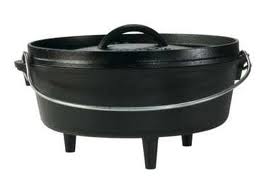 presents like paper for the 1st anniversary, wood for the 5th and the 50th is gold, and I had the thought of trying to come up with a prepper’s version of that same list, and wouldn’t it be funny.
presents like paper for the 1st anniversary, wood for the 5th and the 50th is gold, and I had the thought of trying to come up with a prepper’s version of that same list, and wouldn’t it be funny. 50th anniversaries were community oriented. In Germany, for instance, the friends and neighbors of a couple celebrating their 25th anniversary would congratulate them by presenting them with a silver wreath, or a gold one for their 50th. Apparently, from what I can determine, Asian cultures don’t traditionally celebrate wedding anniversaries with the exception of the silver 25th and the golden 50th. My friend Mark, who is married to a Philippine woman, said that these types of things (birthdays, anniversaries and such, always revolve around a big party with lots of food. In essence, the gift is the party and the food.
50th anniversaries were community oriented. In Germany, for instance, the friends and neighbors of a couple celebrating their 25th anniversary would congratulate them by presenting them with a silver wreath, or a gold one for their 50th. Apparently, from what I can determine, Asian cultures don’t traditionally celebrate wedding anniversaries with the exception of the silver 25th and the golden 50th. My friend Mark, who is married to a Philippine woman, said that these types of things (birthdays, anniversaries and such, always revolve around a big party with lots of food. In essence, the gift is the party and the food. giving your wife a crystal broach on your 15th anniversary nor for her to give you a Glock (hey, I’m not much of a traditionalist) but what if we utilized the stereotype, what would that look like? What kind of gifts would hardcore preppers get for each other after putting up with each other for some number of years, especially if the “norm” is that only one person of the couple is a prepper and the other simply allows them to conduct their craziness as a hobby. I mean, if I bought my wife a meat smoker for our anniversary she’d find physiological inappropriate things to do with the leather hiking boots that I got her in the previous year! But me, she could award my faithfulness and longevity with 70 rounds of .223 and some paper zombie targets and I would know that she honored loved and respected me.
giving your wife a crystal broach on your 15th anniversary nor for her to give you a Glock (hey, I’m not much of a traditionalist) but what if we utilized the stereotype, what would that look like? What kind of gifts would hardcore preppers get for each other after putting up with each other for some number of years, especially if the “norm” is that only one person of the couple is a prepper and the other simply allows them to conduct their craziness as a hobby. I mean, if I bought my wife a meat smoker for our anniversary she’d find physiological inappropriate things to do with the leather hiking boots that I got her in the previous year! But me, she could award my faithfulness and longevity with 70 rounds of .223 and some paper zombie targets and I would know that she honored loved and respected me.
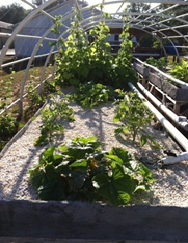


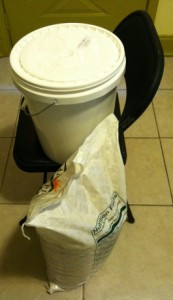


 I find people’s reaction to preparedness interesting. What a person’s great grandparents did 75 years ago is now looked upon as craziness. If one “puts back” (stockpiles), or “puts up” (cans meat or vegetables) then it somehow equates to over-reaction, or I’ve even heard the term- hording. How did we get here?!
I find people’s reaction to preparedness interesting. What a person’s great grandparents did 75 years ago is now looked upon as craziness. If one “puts back” (stockpiles), or “puts up” (cans meat or vegetables) then it somehow equates to over-reaction, or I’ve even heard the term- hording. How did we get here?!
